

 
|
| < Back | ||||||
| Changsha Natureway Co., Ltd. | ||||||
| About this company : Changsha Natureway Co., Ltd. is a professional manufacturer of herbal extracts and green tea extracts in China. We totally have three factories with three laboratories, one key lab as R&D center. With development of more than 20 years, herb ingredient has become one modern factory, equipped with high-class extraction, concentration, isolation, purification, spray drying, sifting, grinding and packing machines. It specializes in the production of various kinds of herbal extracts, such as bilberry extract, citrus aurantium extract, echinacea purpurea extract, grape seed extract, kudzu root extract, panax ginseng extract, wild yam extract and so on. | ||||||
| Contact : li zeng, sales manager | ||||||
| Headquarters : No.1012 Xiongju City East, North Ma, changsha, hunan, 410126, China | ||||||
| Phone : 86-731-2866768, Fax : 86-321-2967875 | ||||||
| Website : Log on to trade instantly , Email : Log on to trade instantly | ||||||
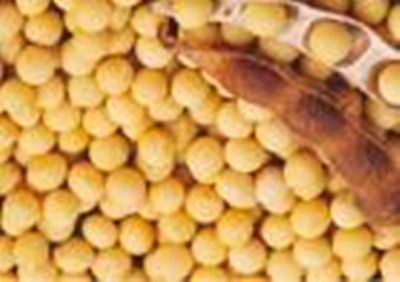 | Soy Bean PE ALSO INDEXED AS: Daidzen, Genistein, Glycine Max, Isoflavone, Protein (Soy), Soya ACTIONS AND PHARMACOLOGY: Soy, a staple food in many Asian countries, contains valuable constituents, including protein, isoflavones, saponins, and phytosterols. Soy protein provides essential amino acids and can be used as effectively as animal protein by adults. It?s also low in fat and cholesterol-free. The isoflavones in soy, primarily genistein and daidzein, have been well researched by scientists for their antioxidant and phytoestrogenic properties. Saponins enhance immune function and bind to cholesterol to limit its absorption in the intestine. Phytosterols and other components of soy have been reported to lower cholesterol levels. The soy isoflavone genistein has been reported to inhibit angiogenesis, the growth of new blood vessels that, when abnormal, can contribute to the development of cancer. Soy isoflavones have also been shown to inhibit 5 alpha-reductase, the enzyme that activates testosterone in the prostate gland and other tissues. 5 Alpha-reductase inhibition represents a potentially effective therapeutic approach to benign prostate enlargement and male pattern baldness. Isoflavones may reduce the risk of hormone-dependent cancers, such as breast and prostate cancer, as well as other cancers. One study of soy research found that 65% of 26 animal-based cancer studies showed a protective effect of soy or soy isoflavones. Human research also suggests a protective role of soy against cancer,but the data are currently insufficient to form any solid conclusions. A meta-analysis study that pooled 38 trials for re-analysis reported that a soy diet led to cholesterol reductions in 89% of the studies. Increasing soy intake was associated with a 23 mg per deciliter drop in total cholesterol levels. Exactly how soy lowers cholesterol remains in debate. The mild estrogen activity of soy isoflavones may ease menopause symptoms for some women, without creating estrogen-related problems. A group of 58 menopausal women, who experienced an average of 14 hot flashes per week, supplemented their diets with either wheat flour or soy flour every day for 3 months; the women taking the soy reduced their hot flashes by 40% one double-blind trial, 60 grams of soy protein led to a 33% decrease in the number of hot flashes after 4 weeks and a 45% reduction after 12 weeks addition, soy may help regulate hormone levels in premenopausal women. Soy may also be beneficial in preventing osteoporosis. Isoflavones from soy protect animals from bone loss.Taking 40 grams of soy protein powder containing 90 mg isoflavones increased bone mineral density of the spine according to a double-blind trial.Although the use of soy in the prevention of osteoporosis looks hopeful, knowing to what extent soy reduces bone loss will require further research. SOURCE: In addition to whole soybeans, foods derived from soy include tofu, tempeh, soy milk, textured and hydrolyzed vegetable protein, meat substitutes, soy flour, miso, and soy sauce. Soy is also available as a supplement, as soy protein or isoflavone in powder, capsule, or tablet form. High levels of soy-based isoflavones are in roasted soy nuts, tofu, tempeh, soy milk, and some soy protein isolates. INDICATIONS AND USAGE: (1) Primary uses: High cholesterol; Menopause. (2) Secondary uses: Cancer risk reduction; Osteoporosis. (3) Other uses: Vaginitis. | |||||
| > Add to cart | ||||||
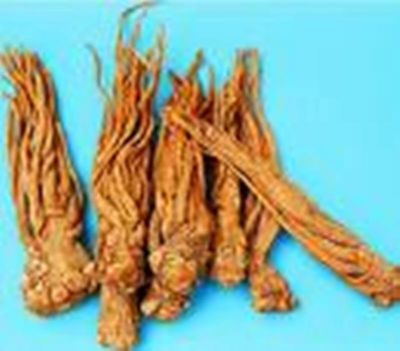 | Angelica PE English Name: Chinese Angelica Latin Name: Radix Angelicae Sinensis Synonym: angelica; angelica root; angelicae sinensis radix; angelicae radix; ligustici radix Category: Standard Herb Extracts Plant Original: Angelica Sinensis (Oliv.) Diels Part Used: Root Specification: Liguistlide 1% HPLC Appearance: Yellow powder Description: A plant genus of the family Apiaceae. Which is mainly used in the relief of menstrual disorders and menstrual cramps. While there is a paucity of formal clinical studies on dong quai, a combination of preclinical animal, in vitro, and limited clinical data suggest that dong quai may be useful as a cardiotonic, cardioprotectant, analgesic, anti-inflammatory, mild sedative, liver-protectant, diuretic, and smooth muscle relaxant. Pharmacological actions: Angelica is a good remedy for colds, coughs, pleurisy, wind, colic, rheumatism and diseases of the urinary organs. | |||||
| > Add to cart | ||||||
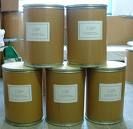 | Astragalus Extract Powder BOTANICAL NAME: Astragalus species PART USED AND HABITAT: Astragalus is native to northern China and the elevated regions of the Chinese provinces Yunnan and Sichuan. The portion of the plant used medicinally is the four- to seven-year-old dried root collected in the spring. The Chinese version has been extensively tested, both chemically and pharmacologically. INDICATION AND USAGE:(1) Secondary Uses: Cancer. (2) Other Uses: Common cold/sore throat; Heart attack; Hepatitis; Immune function; Infection;Systemic lupus erythemaotsus. HISTORICAL OR TRADITIONAL USE: (may or may not be supported by scientific studies): Shen Nung, the founder of Chinese herbal medicine, classified astragalus as a superior herb in his classical treatise Shen Nung Pen Tsao Ching (circa A.D. 100). The Chinese name huang qi translates as ?yellow leader,? referring to the yellow color of the root and its status as one of the most important tonic herbs. Traditional Chinese medicine used this herb for night sweats, deficiency of chi (e.g., fatigue, weakness, and loss of appetite), and diarrhea. ACTIONS AND PHARMACOLOGY: Astragalus contains numerous components, including flavonoids, polysaccharides, triterpene glycosides (e.g., astragalosides I?VII), amino acids, and trace minerals. A polysaccharide called Astragalan B. Animal studies have shown that Astragalan B is effective at controlling bacterial infections, stimulating the immune system, and protecting the body against a number of toxins. Astragalan B seems to work by binding to cholesterol on the outer membranes of viruses, destabilizing their defenses, and allowing for the bodys immune system to attack the weakened invader. Several preliminary clinical studies in China have demonstrated that astragalus can benefit immune function and improve survival in some people with cancer. Given the poor quality of these studies, it is difficult to know how useful astragalus really was. One Chinese study also found that astragalus could decrease overactive immunity in people with systemic lupus erythematosus, an autoimmune disease. Much more study is needed to know if astragalus is safe in lupus or any other autoimmune disease. A randomized study found that intravenous astragalus in people undergoing dialysis for kidney failure improved one facet of immune function compared to untreated controls. Further study is indicated to determine if astragalus can help prevent infections in people undergoing dialysis. Early clinical studies in China suggest astragalus root might also benefit people with chronic viral hepatitis, though it may take one to two months to see results. In preliminary studies in China, astragalus has been used after people suffer heart attacks. More research is needed to determine whether astragalus is truly beneficial in this situation 70% Polysaccharides | |||||
| > Add to cart | ||||||
.jpg) | Black Cohosh PE BOTANICAL NAME: Cimicifuga racemosa PARTS USED AND HABITAT: Black cohosh is a shrub-like plant native to the eastern deciduous forests of North America, ranging from southern Ontario to Georgia, north to Wisconsin and west to Arkansas. The dried root and rhizome are used medicinally. When harvested from the wild, the root is black in color. Cohosh, an Algonquin Indian word meaning ?rough,? refers to the plants gnarly root structure. INDICATIONS AND USAGE: (refer to the individual health concern for complete information):(1) Primary: Menopause(2) Other: Dysmenorrhea (painful menstruation); Osteoporosis; Uterine spasms HISTORICAL OR TRADITIONAL USE: (may or may not be supported by scientific studies): Native Americans valued the herb and used it for many conditions, ranging from gynecological problems to rattlesnake bites. Some nineteenth-century American physicians used black cohosh for fever, menstrual cramps, arthritis, and insomnia. ACTIONS AND PHARMACOLOGY: Black cohosh contains several ingredients, including triterpene glycosides (e.g., acetin and cimicifugoside) and isoflavones (e.g., formononetin). Other constituents include aromatic acids, tannins, resins, fatty acids, starches, and sugars. Formononetin is a constituent in the herb that has been shown to bind to estrogen receptor sites in test tube studies. As a woman approaches menopause, the signals between the ovaries and pituitary gland diminish, slowing down estrogen production and increasing luteinizing hormone (LH) secretions. Hot flashes can result from these hormonal changes. A clinical study in Germany demonstrated that an extract of black cohosh decreases LH secretions in menopausal women. German clinical studies support the usefulness of black cohosh for women with hot flashes associated with menopause. A review of eight trials concluded black cohosh to be both safe and effective. Recently, a clinical study compared the effects of 40 mg versus 130 mg of black cohosh in menopausal women with complaints of hot flashes. While hot flashes were reduced equally at both amounts, there was no evidence of any estrogenic effect in any of the women. Black cohosh is therefore reserved only for the symptomatic treatment of hot flashes associated with menopause and is not thought to be a substitute for hormone replacement therapy in menopausal and postmenopausal women. A recent study suggests black cohosh may protect animals from osteoporosis. Human studies have not confirmed this action. | |||||
| > Add to cart | ||||||
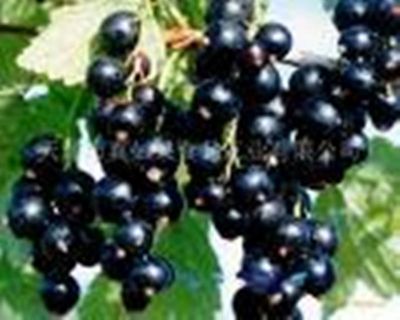 | Black currant PE Product Name: Black Currant Extract Specification:Flavonoids 20% UV Plant Origin: Ribes nigrum Blackcurrant fruits are a good source of minerals and vitamins, especially vitamin C. They have diuretic and diaphoretic actions, help to increase bodily resistance to infections and are a valuable remedy for treating colds and flu. The juice, especially when fresh or vacuum-sealed, helps to stem diarrhoea and calms indigestion. The leaves are cleansing, diaphoretic and diuretic. Action: 1. An infusion is used in the treatment of dropsy, rheumatic pain and whooping cough, and can also be used externally on slow-healing cuts and abscesses. 2. It can be used as a gargle for sore throats and mouth ulcers. 3. The oil from the seed is added to skin preparations and cosmetics. It is often combined with vitamin E to prevent oxidation. | |||||
| > Add to cart | ||||||
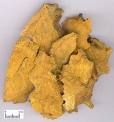 | Giant Knotweed Extract Latin name: Polygonum cuspidatum sieb.et Zuec Part used: Rhizome Appearance: Orange or redish brown powder Test Method:HPLC Part of the Plant Used: Root & Rhizome of Polygonum cuspidatum Sieb. et Zucc. Extract Method:Alcohol Applicable field:Medicine Assay:10%--99% Active material: Resveratrol Molecular Formula :C14H12O3 Molecular Weight:228.24 Melting point: 253oC-255oC Solubility: soluble in diethyl ether, Chloroform, Etheyl alcohol, Acetone Packing: Double-deck plastic bag, pack with aluminium foil paper outside Shelf Life : 2 years under well Storage situation and stored away from direct sun light. What is the Giant Knotweed Extract? Giant knotweed is an east Asian species (Polygonum cuspidatum), belonging to the Polygonaceae family. Documented uses in traditional Chinese medicine date to the first century BC, and contemporary medical uses supported by clinical results include acute microbial infections or viral hepatitis, chemo- or radiation-induced leukocytopenia, atherosclerosis, and hyperlipidemia. | |||||
| > Add to cart | ||||||
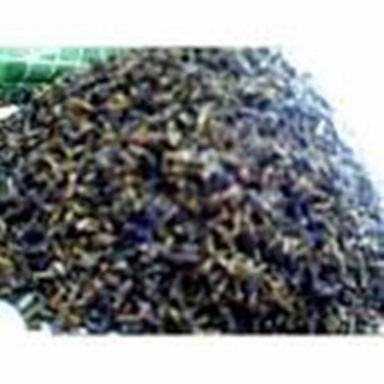 | Guarana Extract Latin Name: Paullinia cupana Specificaiton: Caffeine 21% Water-solubility: Good Application: For Beverage Product Type: Light brown powder extract Part of the Plant Used: seed Extract Method: water What is Guarana extract? Guarana is a herbal stimulant that contains a form of caffeine called guaranine, which is 2.5 times stronger than the caffeine found in coffee, tea and soft drinks. While caffeine from beverages provides a short-lived energy burst that overheats and excites the body, guaranine has a cooling action that revitalizes and relaxes. This is because guarana contains other components that modify the activity of this substance. The end result is more beneficial to the body than tea or coffee. Caffeine accelerates the effectiveness of CLA, thus making CLA a more potent fat burner. Guarana has been shown to stimulate the migration of lipids so fat can be burned as energy. It is also an appetite suppressant. Guarana increases mental alertness, fights fatigue, and increases stamina and physical endurance. Native to Brazil, guarana is taken daily as a health tonic by millions of Brazilians. It is reported to help overcome heat fatigue, detoxify the blood and is useful for flatulence and obesity. In body care products, it has been used for its tonifying and astringent properties, and in the treatment of cellulite. In a study published in the June 2001 issue of the Journal of Human Nutrition Diet, guarana extract induced weight loss over 45 days in overweight patients taking a mixed herbal preparation containing yerbe mate, guarana and damiana. Body weight reductions were 11.22 pounds in the guarana group compared to less than one pound in the placebo group after 45 days. Where will be Guarana extract used to? increase mental alertness help to fight fatigue increase stamina and endurance. Fuction: 1. Appetite suppressant 2. A flavoring in soft drinks 3. Pain relief 4. Smoking cessation 5. Stimulant | |||||
| > Add to cart | ||||||
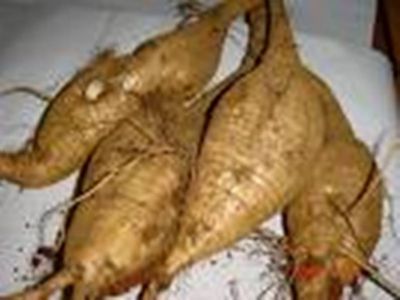 | Kudzu root extract Plant Origin: Pueraria lobata Specification: KDZ-Flavone 40% HPLC Active Ingredient: Isoflavones Part used: Root Appearance: Brown fine powder Product Content: Isoflavones≥40% Product Origin: Extracted from the Root of Kudzu. Kudzu, is also knowed as Pueraria, has been known for centuries in traditional Chinese medicine. The first written mention of the plant as a medicine is in the ancient herbal text of Shen Nong (circa A.D.100). Kudzu Root is high in isoflavones, such as daidzein, as well as isoflavone glycosides, such as daidzin and puerarin. Action: 1) It is used as remedy for diaphoretic, antispasmodic, muscle relaxant, antipyretic. 2) It is also used for fevers caused by heat in colds and influenza and for stiff neck and shoulders. | |||||
| > Add to cart | ||||||
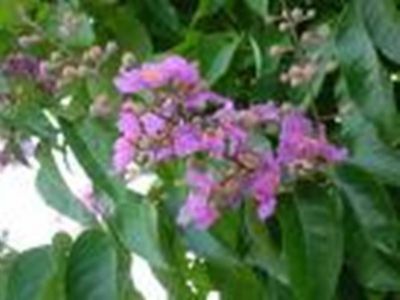 | Lagerstroemia speciosa Product Specification : 1%~40% Corosolic Acid Latin Name: Musa paradisiaca Product Type: Fine green powdered extract Part of the Plant Used: leaf Extract Method: Water/ Grain Alcohol What is Banaba Leaf extract? Banaba leaf extract contains a triterpenoid compound known as corosolic acid ?which has actions in stimulating glucose transport into cells. As such, banaba plays a role in regulating levels of blood sugar and insulin in the blood. For some people, fluctuations in blood sugar and insulin are related to appetite, hunger and various food cravings ?particularly craving for carbohydrates such as bread and sweets. By keeping blood sugar and insulin levels in check, banaba may be an effective supplement for promoting weight loss in certain individuals Banaba is a medicinal plant that grows in India, Southeast Asia and the Philippines. Traditional uses include brewing tea from the leaves as a treatment for diabetes and hyperglycemia (elevated blood sugar). The hypoglycemic (blood sugar lowering) effect of banaba leaf extract is similar to that of insulin ?which induces glucose transport from the blood into body cells. The blood sugar regulating properties of banaba have been demonstrated in cell culture, animal and human studies. In isolated cells, the active ingredient in banaba extract, corosolic acid, is known to stimulate glucose uptake. In diabetic mice, rats and rabbits, banaba feeding reduces elevated blood sugar and insulin levels to normal. In humans with type II diabetes, banaba extract, at a dose of 16-48mg per day for 4-8 weeks, has been shown to be effective in reducing blood sugar levels (5%-30% reduction) and maintaining tighter control of blood sugar fluctuations. An interesting 搒ide-effect?of tighter control of blood sugar and insulin levels is a significant tendency of banaba to promote weight loss (an average of 2-4 lbs. per month) ?without significant dietary alterations. It is likely that modulation of glucose and insulin levels reduces total caloric intake somewhat and encourages moderate weight loss. Where will be Banaba Leaf extract used to? Balances blood sugar Promotes healthy insulin levels Controls appetite and food craving (especially carbohydrate cravings) promote weight loss Packing Detail Packed in paper-drums and two plastic-bags inside Weight: 25kgs/drum. I.D. 40CmX50CM Storage Situation Stored in a cool and dry well-closed container, keep away from moisture and strong light / heat. Shelf Life two years under well Storage situation and stored away from direct sun light. | |||||
| > Add to cart | ||||||
 | Lycium chinense extract origin: growing in hillside slope,upland,sandiness,road side in south part of DaXingAnLingn be cultivated. chemical ingredient : fruit contain renieratene 3.39mg%,aneurine(0.23mg%), lactoflavin(0.33mg%),nicotinic acid(NA)(1.7mg%), ascorbic acid(3mg%),and linoleic acidot contains matters in inhibiting aneurine activity. Model No.:CWB Product Name: Chinese Wolfberry P.E. Plant Origin: Lycium barbarum Specification: CWB-Polysaccharide 50% UV Chinese Wolfberry,also known as Lycii berry,is a bright red, almost chewy berry with a taste very similar to Raisins. It has been used as a general nutrient tonic (Yin tonic) for many years and Chinese medicine refers to it as a "cooling tonic". Whole berries can be eaten raw, as they have a pleasant taste. Or they can be included in food or prepared as a tea. Action: 1) It helps to maintain healthy immune system, improving eye conditions, support healthy liver function, and maintain healthy blood pressure and blood sugar. 2) It is also an excellent herb for anti-oxidant and anti-aging. | |||||
| > Add to cart | ||||||
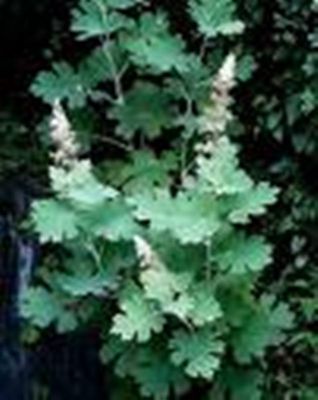 | Macleaya cordata Extract Latin Name: Macleaya cordata (Willd.) Part Used: Fruit Active Ingredients: Sanguinarine chelerythrine protopine︳-Allocryptopine β-Allocrytopine Bocconine Description: Sanguinarine (pseudochelerythrine) is a potent inhibitor of NF-kappaB activation, IkappaBalpha phosphorylation, and degradation. Macleaya cordata (Willd.)R is a bloodroot which owns thousand year history of medicinal usage in China. 13 kinds of alkaloids and other compounds such as sanguinarine, toddaline, protopine, a-allocryptopine, bocconine, rhizoma coptidis alkali, berberine, samin alkali and protopine are in the root and aerial parts. Macleaya cordata extract contains sanguinaine and chelerythrine, which have fungicidal and insecticidal activity. Sanguinarine (pseudochelerythrine) is a potent inhibitor of NF-kappaB activation, IkappaBalpha phosphorylation, and degradation.Macleaya cordata contains several alkaloids including sanguinarine, chelerythrine, protopine, and allocryptopine.Our product, Macleaya cordata extract mainly constains with sanguinarine and chelerythrine. It was been show to be reversible inhibitors of the enzymatic hydrolysis of acetylthiocholine. It was reported that a study was made of a possible inhibitory action on the enzymatic hydrolysis of acetylthiocholine by human erythrocyte acetylcholinesterase of principal alkaloids isolated from Chelidonium majusL. and Macleaya cordata and microcarpa,and of drugs Ukrain and Sanguirythrine. Among all examined agents berberine, sanguinarine and Sanguirythrine were the strongest inhibitors of this reaction.Judging from the data obtained, sanguinarine and chelerythrine exert similar inhibitory effects on the reaction of enzymatic hydrolysis of acetylthiocholine. Application: Feed antibiotics, Agriculture insecticide, Agriculture bactericide, Veterinary injection | |||||
| > Add to cart | ||||||
 | Magnolia Bark Extract English name:Officinal Magnolia Bark Extract Product name:Twenty extraction Latin name:Magnolia Officinallis Rehd.et Wils. Active ingredients:Honokiol Testing method:HPLC Source products:Twenty of the dry roots skin, barks or sticks to the skin of raw materials Active ingredients:Major components such as active ingredients for phenol sexual show phenol (Magnolol) , and show phenol (Honokiol) , CBN show phenol (Tetrahhydromagnolol) , the differences show phenol Isomagnolol) , but also contain 30 Various volatile components and multiple content categories compounds. Product specifications More than the total phenol 30.0% And greater than the total phenol 95% Testing method:HPLC Stem bark Quilled singly or double quilled, 30~35 cm long, 2~7 mm thick, commonly known as "Tongpo"; stem bark near the root with one end spread out like a bell, 13~25 cm long, 3~8 mm thick, commonly known as "Xuetongpo". Outer surface greyish-brown, rough, sometimes scaly, easily exfoliated, with distinct elliptical lenticels and longitudinal wrinkles, appearing yellowish-brown when the coarse bark peeled; inner surface purplish-brown, relatively smooth, with fine and dense longitudinal striations and exhibiting oily trace on scratching. Main uses functional and China has been under gas, Huashi cited sluggish effectiveness. For antibiotic sterilization, chest Zhangman, Changgengzu, Tanyin gasp summer. Pharmacological role 1,the anti-bacterial pathogenic organisms; 2,muscle lax; 3 ,And the role of the digestive system; 4, And the cardiovascular system; 5,the anti-cancer role. Pharmacology function: 1\the anti-bacterial pathogenic organisms; 2\muscle lax; 3 \And the role of the digestive system; 4\ And the cardiovascular system; 5\the anti-cancer role. | |||||
| > Add to cart | ||||||
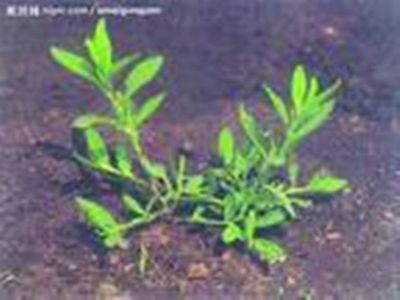 | Polygonum aviculat Model No.:CKH Product Name: Common Knotgrass Herb P.E. Plant Origin: Polygonum aviculare Extract Ratio:10:1 Common Knotgrass Herb is a safe and effective astringent and diuretic herb that is used mainly in the treatment of complaints such as dysentery and haemorrhoids. It is also taken in the treatment of pulmonary complaints because the silicic acid it contains strengthens connective tissue in the lungs Action: 1) Common Knotgrass Herb was formerly widely used as an astringent both internally and externally in the treatment of wounds, bleeding, piles and diarrhea. 2) Its diuretic properties make it useful in removing stones. 3) Recent research has shown that Common Knotgrass Herb is a useful medicine for bacterial dysentery | |||||
| > Add to cart | ||||||
.jpg) | Red Yeast Rice PE Active Ingredient Markers: Lovastatin 1.5% HPLC Appearance: Fine Violet Red Powder Particle size: passed 80 mesh Red yeast rice has been used in China for centuries as both a food and as a medicinal substance. Fermenting a type of yeast called Monascus purpureus over red rice makes it. In Chinese medicine, red yeast rice is used to promote blood circulation, soothe upset stomach, and invigorate the function of the spleen, a body organ that destroys old blood cells and filters foreign substances. In addition, this dietary supplement has been used traditionally for bruised muscles, hangovers, indigestion, and colic in infants. Recently, it has been discovered that red yeast rice contains substances that are similar to prescription medications that lower cholesterol. There is also growing interest in evaluating red yeast rice for use as a natural food dye and/or preservative. The overlap of red yeast rice use as both a medicine and a food in traditional Chinese practice is mirrored by a modern day controversy in the United States. Currently, red yeast rice is classified as a dietary supplement by the United States Food and Drug Administration (FDA); however, given its contents and function, there are many who feel that it is actually being used as an unregulated medication. There is ongoing debate, therefore, about whether to change the status of red yeast rice to a prescription drugwhich would require much greater regulation. The following studies suggest that red yeast rice significantly reduces high cholesterol: (1) Recently, the UCLA School of Medicine conducted a study involving 83 people with high cholesterol levels. Those who received red yeast rice over a 12-week period experienced a significant reduction in total cholesterol, LDL ("bad") cholesterol, and triglycerides (fatty substances that can also accumulate in the blood stream and cause damage to blood vessels) compared to those who received placebo. HDL ("good") cholesterol did not change in either group during the study. 2) Two studies involving red yeast rice were presented at the American Heart Association's 39th Annual conference in 1999. The first study, involving 187 people with mild to moderate elevations in total cholesterol and LDL cholesterol revealed that treatment with red yeast rice reduced total cholesterol by more than 16%, LDL cholesterol by 21%, and triglycerides by 24%. HDL cholesterol also increased by 14%. In the second study, elderly participants who were given red yeast rice experienced significant reductions in total cholesterol and LDL cholesterol compared to those who received placebo. Both studies treated the participants with the supplement or placebo for 8 weeks. (3) In another 8-week trial involving 446 people with high cholesterol levels, those who received red yeast rice experienced a significant drop in cholesterol levels compared to those who received placebo. Total cholesterol fell by 22.7%, LDL by 31%, and triglycerides by 34% in the red yeast rice group. HDL cholesterol increased by 20% in the red yeast rice group as well. Red yeast rice is used in powdered form as a food coloring in Asia and in Chinese communities in North America, most commonly for coloring fish, alcoholic beverages, and cheeses. Manufacturers recommend that people under age 20 should not be given this supplement until further information is available. There is currently no scientific information indicating whether red yeast rice can be safely given to children. | |||||
| > Add to cart | ||||||
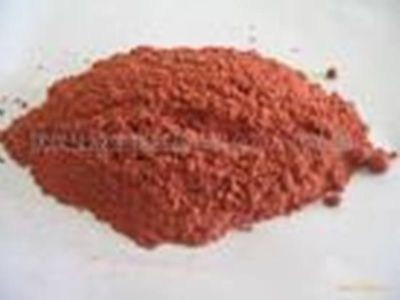 | Red Yeast Rice PE&12288 Active Ingredient Markers: Lovastatin 1.5% HPLC Appearance: Fine Violet Red Powder Particle size: passed 80 mesh Red yeast rice has been used in China for centuries as both a food and as a medicinal substance. Fermenting a type of yeast called Monascus purpureus over red rice makes it. In Chinese medicine, red yeast rice is used to promote blood circulation, soothe upset stomach, and invigorate the function of the spleen, a body organ that destroys old blood cells and filters foreign substances. In addition, this dietary supplement has been used traditionally for bruised muscles, hangovers, indigestion, and colic in infants. Recently, it has been discovered that red yeast rice contains substances that are similar to prescription medications that lower cholesterol. There is also growing interest in evaluating red yeast rice for use as a natural food dye and/or preservative. The overlap of red yeast rice use as both a medicine and a food in traditional Chinese practice is mirrored by a modern day controversy in the United States. Currently, red yeast rice is classified as a dietary supplement by the United States Food and Drug Administration (FDA); however, given its contents and function, there are many who feel that it is actually being used as an unregulated medication. There is ongoing debate, therefore, about whether to change the status of red yeast rice to a prescription drugwhich would require much greater regulation. | |||||
| > Add to cart | ||||||
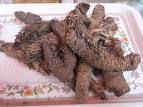 | Rhodiola Rosea PE Plant sources Jingtian Section perennial herbs Rhokiola rosea L. Dry Roots, the ground corn stalk elongation, to 50cm , rough around 1-1.5cm ; Ye love, or got long circular needle-hand smoke. Born in the flower stems grow top, long reach 20cm , petals red. Florescence 6-8 Months. Extraction occurs Roots Effectiveness Yangfei rare, healthy vigor Smell Gas fragrant and sweet, bitter flavor Appearance Brown or red brown fine powder Active ingredients Main ingredients for effective Shan Network (Salidroside) , dairy alcohol (Tryosol) , Rosavin , Rosarin , Rosin , and many more buds and Huangtong compounds. Main specifications Shan Network 1%~3% Rosavin 1%~3% Effectiveness Organisms with enhanced immunity, enhance physical and improve human blood virus, anti - lack of oxygen, medicine old anti-tumour, anti-fatigue, lowering blood glucose, anti-virus, anti-radiation to prevent reaction to the altitude, and many other functions. Latin name:Rhodiola sachalinensis A.Bor. Rhodiola comprises several species of plants in the Crassulacea family and is generally found in the arctic mountain regions of Siberia. The root of the plant is used medicinally and is also known as "Arctic root" or "Golden root" and more recently as Crenulin. Rhodiola has been used for hundreds of years to treat cold and flu-like symptoms, promote longevity and increase the body's resistance to physical and mental stresses. Rhodiola is typically considered to be an adaptogen and is believed to invigorate the body and mind to increase resistance to a multitude of stresses. The key active constituents in Rhodiola are believed to be rosavin, rosarin, rosin and salidroside. Rhodiola rosea extract is thought to be quite safe. There are no known contraindications or interactions with other drugs/herbs, but there is some potential for allergic reactions in some individuals. Action: 1) It is used as tonic and sexual elixir for both man and woman in china. 2) It has been shown to significantly allow for improvements in athletic performance. It has been reported to have effects from boosting immune function to enhancing memory to improving recovery from exercise. | |||||
| > Add to cart | ||||||
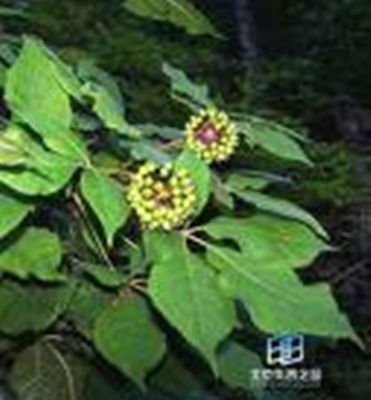 | Siberian Ginseng Extract Powder BOTANICAL NAME:, Eleutherococcus senticosus, Acanthopanax senticosus PARTS USED AND HABITAT: Eleuthero belongs to the Araliaceae family and is a distant relative of Asian ginseng (Panax ginseng). Also known commonly as touch-me-not and devil?s shrub, eleuthero has been most frequently nicknamed Siberian ginseng in this country. Eleuthero is native to the Taiga region of the Far East (southeastern part of Russia, northern China, Korea, and Japan). The root and the rhizomes (underground stem) are used. INDICATIONS AND USAGE: (1) Primary uses: Fatigue; Immune function; Stress. (2) Secondary uses: Athletic performance. (3) Other uses: Chronic fatigue syndrome; Common cold/sore throat; Diabetes; Fibromyalgia; HIV support; Infection HISTORICAL OR TRADITIONAL USE (may or may not be supported by scientific studies): Although not as popular as Asian ginseng, eleuthero use dates back 2,000 years, according to Chinese medicine records. Referred to as ci wu jia in Chinese medicine, it was used to prevent respiratory tract infections, colds and flu. It was also believed to provide energy and vitality. In Russia, eleuthero was originally used by people in the Siberian Taiga region to increase performance and quality of life and to decrease infections. In more modern times, eleuthero?s ability to increase stamina and endurance led Soviet Olympic athletes to use it to enhance their training. Explorers, divers, sailors, and miners used eleuthero to prevent stress-related illness. After the Chernobyl accident, many Russian and Ukrainian citizens were given eleuthero to counteract the effects of radiation. ACTIONS AND PHARMACOLOGY: The constituents in eleuthero that have received the most attention are the eleutherosides. Seven primary eleutherosides have been identified, with most of the research attention focusing on eleutherosides B and E. Eleuthero also contains complex polysaccharides (complex sugar molecules). These constituents play a critical role in eleuthero?s ability to support immune function. As an adaptogen, eleuthero helps the body adapt to stress by supporting healthy adrenal gland function; it allows the glands to function optimally when challenged by stress. Eleuthero has been shown to enhance mental acuity and physical endurance without the letdown that comes with caffeinated products. Research has shown that eleuthero improves the use of oxygen by the exercising muscle. This means that a person is able to maintain aerobic exercise longer and recover from workouts more quickly. Research from Russia indicates it may be effective for this purpose. Other studies have been inconclusive or have shown no beneficial effect. Eleuthero also supports the body by helping the liver detoxify harmful toxins. It has shown a protective action in animal studies against chemicals such as ethanol, sodium barbital, tetanus toxoid, and chemotherapeutic agents. Eleuthero also helps protect the body during radiation exposure. Preliminary studies in Russia have confirmed the use of eleuthero for people undergoing chemotherapy and radiation therapy for cancer to help alleviate side effects and help bone marrow recover more quickly. Eleuthero enhances and supports the immune response. Eleuthero may be useful as a preventive measure during the cold and flu season. Preliminary evidence also suggests that eleuthero may prove valuable in the long-term management of various diseases of the immune system, including HIV infection and chronic | |||||
| > Add to cart | ||||||
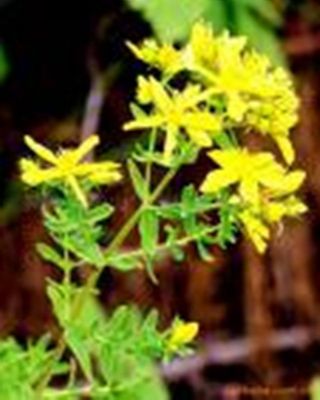 | St John's Wort PE Model No.:SJW Product Name: St. John's Wort P.E. Plant Origin: Hypericum Perforatum Specification: SJW-Hypericin 0.3% UV/Hyperforin 3% UV St. Johnís wort has been used since ancient times for everything from a ďprotector against evil spiritsĒ (depression) and for wound healing to its most common present-day use as an antidepressant. The active ingredients in St. Johnís wort extract are unknown, but extracts standardized to contain napthodianthrone compounds such as hypericin and pseudohypericin along with phloroglucinols such as hyperforin and adhyperforin are known to be effective in alleviating mild to moderate depressive symptoms (see below). St. Johnís wort also contains various flavonoids and proanthocyanidin polymers. As an antidepressant, St. Johnís wort has been shown to inhibit an enzyme (catechol-O-methyltransferase) which degrades certain neurotransmitters such as dopamine. It has also been shown to inhibit serotonin re-uptake in the brain, and to reduce expression of interleukin-6 and gamma-amino butyric acid (GABA) uptake. Each of these actions can contribute to alleviating depression by slowing the recycling of neurotransmitters needed for maintaining emotional balance. As an anti-viral agent, St. Johnís wort has been reputed to inhibit replication of several viruses, including the Herpes simplex, HIV, and the virus that causes mononucleosis. Action: 1) It has significant support in the treatment of mild to moderate depression, can also help to control appetite and Promotes weight loss. 2) It is a valuable healing and anti-inflammatory remedy, and improves tolerance to stress. | |||||
| > Add to cart | ||||||
 | Tomato Extract Powder Botanical source:Lycopene is kind of natural pigment with bright red color ,it is narrowly distributed world ,it is mainly existed in tomato ,watermelon ,red grapefruit ,Chinese quava ,guava ,balsam pear etc. Appearance:Dark Red Powder。 Functions:Lycopene is an important member of the carotinoid families ,molecular formula is c40h56, molecular weight is 536.85 may restrain and reduce the occurring rate of prostate cancer ,womb cervical cancer ,pancreatic cancer and vesica demonstrated that lycopene is the strongest carotinoid for neutralizing free-radicals. It is powerful antioxidant ,more than vitamin-E one hundred times and more than b-carotene twice ,it has many biological activies, can stand over entlity ,strengthen immune function ,better for human`s nutrition and health. Specification:Lycopene oil-resin 1% 3% 6%. | |||||
| > Add to cart | ||||||
 | trifolium pratense Product Name:Red Clover P.E. Isoflavones 2.5% 8% 20% 40% 60% HPLC Red Clover Extract Powder PLANT ORIGINAL: Trifolium pratense PART USED: Aerial Parts SPECIFICATION:2.5% 40% HPLC INDICATIONS:Red Clover acts as an antibiotic, appetite suppressant, blood purifier / depurative and relaxant. Good for bacterial infections, HIV and AIDS, inflamed lungs, inflammatory bowel disorders, kidney problems, liver disease, skin disorders and weakened immune system. Red Clover has been shown to have efficacy for respiratory system infection Features: 1) Botanical source: trifolium pratense L. leaves or flowers used 2) Appearances: a) Brownish-black to b) Brownish-green fine powder What is Red Clover extract? Red clover contains isoflavine compounds that theoretically could help prevent certain types of cancer, including breast and prostate cancer. however, an actual protective action in humans remains to be demonstrated the meantime,red clover is valued for its ability to loosen phlegm and calm bronchial spasms.a small perennial herb with fleshy red or white flowers, it is native to Europe,central asia,and northern Africa,and is naturalized in many other parts of the world.for medicinal purposed, only the flowers are used Where will be red clover extract use to? * bronchitis * cough * eczema, boils, acne, | |||||
| > Add to cart | ||||||
 | White Willow Bark PE Botanical Name:Salix alba Family:Salicaceae Common names:Salicin willow,Willow withe,Withy General:White willow bark has a long history of use for reducing fever and pain. It was also used to treat inflammation by the ancient Egyptians. Native Americans are thought to have steeped willow bark in tea as a remedy for relief to fevers. More than 100 years ago, its active ingredient salicin was identified. White willow bark is a source of salicin and other salicylates compounds, which are similar in structure to aspirin (acetyl salicylic acid). Characteristics: Light brown-yellow powder Model No.: WWB Plant Origin: Salix alba Specification:WWB-Salicin 15%, 20% HPLC The bark of the white willow tree is a source of salicin and other salicylates - compounds which are similar in structure to aspirin (acetyl salicylic acid). Native Americans are thought to have used ground willow bark and bark steeped for tea as a medicinal remedy for everything from pain relief to fevers. Today, white willow bark is often used as a natural alternative to aspirin - one of the most common uses in dietary supplements is as an adjunct for weight loss. Functions: 1. Treatments for fevers, colds and infections As ?nature aspirin?, salicin is used to treat mild fevers, colds, infections (influenza), acute and chronic rheumatic disorders, headaches, and pain caused by inflammation. Aspirin (acetylsalicylic acid), a synthetic replacement for salicin, has potentially dangerous gastrointestinal side effects. In its natural form, salicin passes harmlessly through the gastrointestinal tract, converted to salicylic acid in the blood and the liver. The conversion process takes a few hours, so the results will not be felt immediately, but are normally sustained for several hours. 2, Pain Relief in Osteoarthritis and low back pain: Salicin is thought to be the source of the anti-inflammatory and pain-relieving actions of willow. The analgesic actions of willow are typically slow to develop but may last longer than the effects of standard aspirin products. One trial has found that a combination herbal product including 100 mg willow bark taken for two months improved functioning via pain relief in people with osteoarthritis.Another trial found that 1360 mg of willow bark extract per day (delivering 240 mg of salicin) for two weeks was somewhat effective in treating pain associated with knee and/or hip osteoarthritis. [5] Use of high amounts of willow bark extract may also help people with low back pain. One four-week trial found 240 mg of salicin from a willow extract was effective in reducing exacerbations of low back pain. | |||||
| > Add to cart | ||||||
| 1 |
| Page 1 of 1 |
 |
|
 |
|

Know-How | Trading Precaution | Phishing Alerts | SOAOnDemand! | VAR 360 | RSS Feed | ||
| Copyright © 2026 MarginUp All Rights Reserved. MarginUp User Agreement and Privacy Policy. |
||